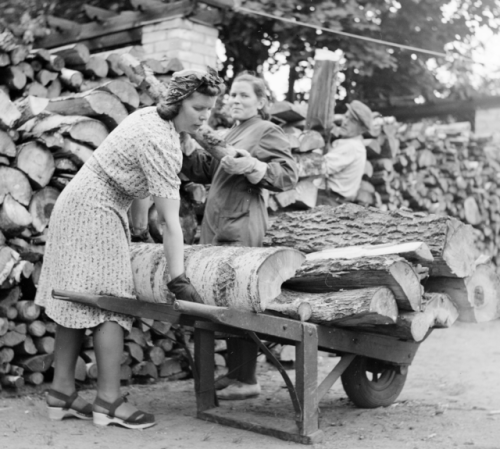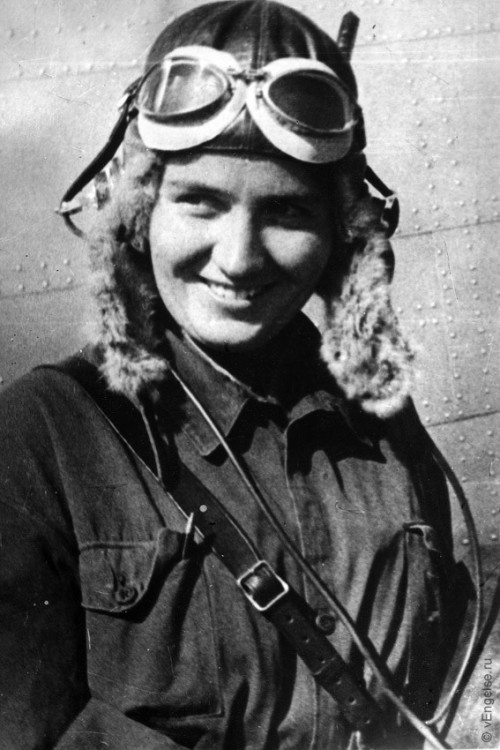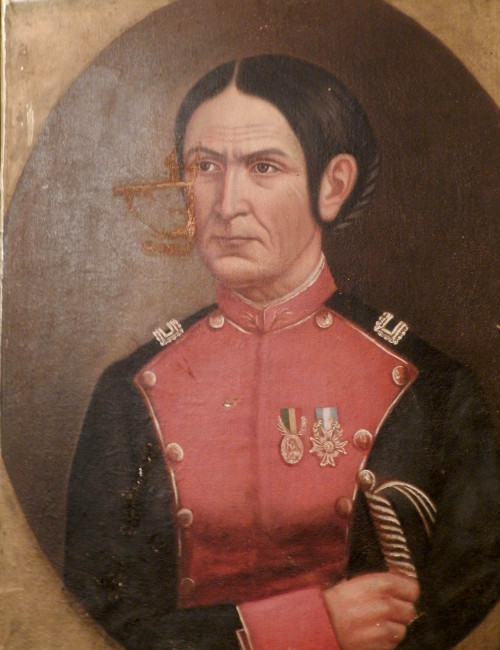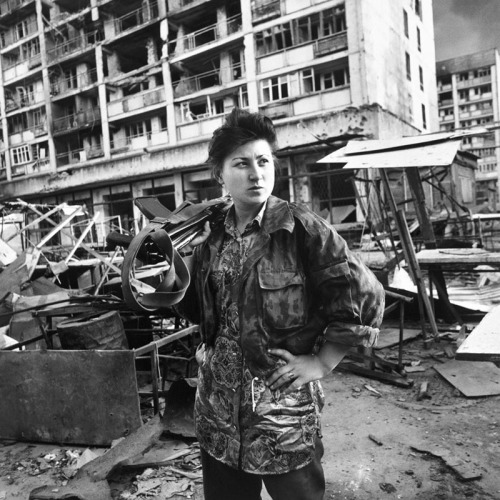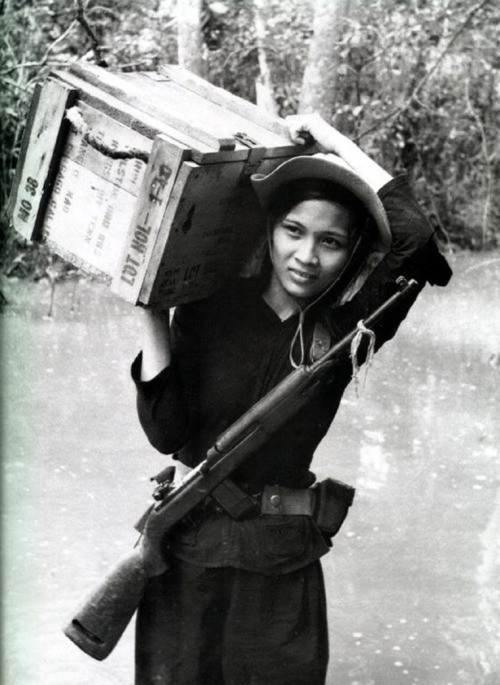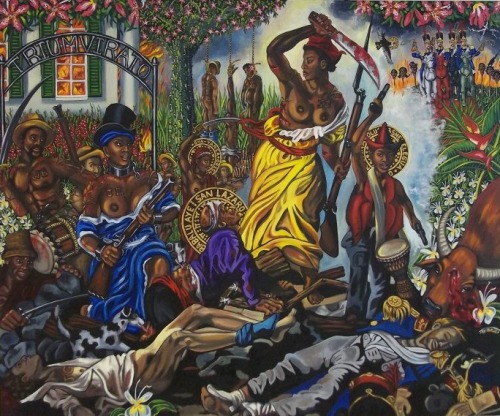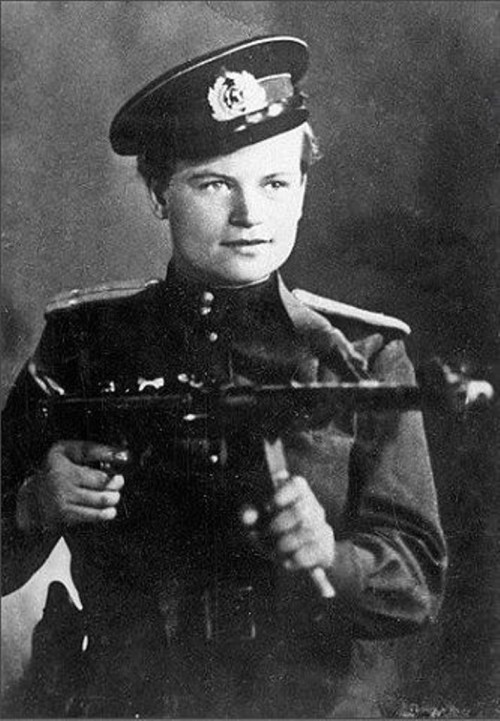#womens history
Grace Fairley Robinson (1870-1948) was one of the two first women to graduate in Medicine from the University of Sydney in 1893. University testimonials referred to her ‘zeal, energy and enthusiasm’.
Grace was nominated for a position at the Hospital for Sick Children. Despite excellent references, her application was rejected: the objection was ’not against [Dr Robinson] as an individual but against the female doctor in the abstract’.
She was appointed resident medical officer at the Benevolent Asylum, Pitt Street. In 1909 Grace became assistant medical inspecting officer with the Department of Public Instruction. In 1912 Grace had formed the Professional Women’s Association, dedicated to improving social conditions for women and children. She was convenor (1913-26) of the standing committee on health for the National Council of Women of New South Wales, a founding member (1921) of the State branch of the League of Nations Union and vice-president of the Town Planning Association. In 1923-26, as medical director of Berlei Ltd, she had responsibility for the health and welfare of nearly six hundred female employees and for collaborating with designers on the ’correct anatomical lines of their garments’.
(State Archives NSW/Australian Dictionary of Biography)
Post link
Workers busy loading a wheelbarrow with birch wood in Finland, 1942.
(Finnish Museum of Photography)
Post link
“Well-behaved women seldom make history.” - Laurel Thatcher Ulrich
Oddly enough, this quote is often taken out of context and interpreted as a sort of slogan encouraging women to act out so they can “make history.” Ulrich’s original intent was almost the opposite–that ordinary women’s lives have not been valued by historians of the past, have not been seen as worthy of note.
A quote from an article about her book Well-behaved Women Seldom Make History states:
throughout history, “good” women’s lives were largely domestic, notes Ulrich. Little has been recorded about them because domesticity has not previously been considered a topic that merits inquiry. It is only through unconventional or outrageous behavior that women’s lives broke outside of this domestic sphere, and therefore were recorded and, thus, remembered by later generations. Ulrich points out that histories of “ordinary” women have not been widely known because historians have not looked carefully at their lives, adding that by exploring this facet of our past, we gain a richer understanding of history.
I was reminded of this after reading similar commentary from Patricia Ebrey in The Inner Quarters: Marriage and the Lives of Chinese Women in the Sung Period. She writes:
Historians who see women’s history as a means of breaking down stereotypes about women’s place in society tend to neglect the married women who stayed home rearing children and tending to family affairs, preferring instead to uncover exceptional women who gained power or prominence in the largely male worlds of rulers, artists, writers, or rebels. Even though most women in premodern societies identified themselves with their roles in their families, the history of women and the history of the family have been treated as two distinct, at times even antagonistic, disciplines.
Too often we fall into the trap of thinking of “domestic” work as inferior or of lesser value. As someone who just finished a year of caring for my son full-time, I can say that it was the hardest thing I’ve ever done. I had just come off of an intense job that often had me working 60 to 70 hours a week and frequently working late into the night, and it was still nothing compared to the work I did in my home.
I’m also not trying to say that being a stay at home mother is better than working. It’s wonderful that women have so many more options and opportunities than they used to. I myself just started grad school, and i’m so excited for the career I am currently planning ahead of me. I’d never pretend that I want to go back in time to the days when women’s only sources of power were in domestic spheres, where the death of a spouse, infertility, or abandonment could spell disaster for a woman’s entire livelihood. What I amsaying is that women can be just as powerful in the family setting as they are in the work space. Our contributions to our families should be valued and recognized. And we should support each other in our endeavors, whether we choose to work or choose to stay at home–whether we choose to have families or whether we choose to stay childless, whether we choose to marry of choose to stay single.

“In seven compelling essays, the author narrates Japan’s modern history through its gendered and sexualized figures: imperial soldiers and salarymen, good wives and wise mothers, New Women and Modern Girls, comfort women and prostitutes, sexologists and queers, artists and video gamers. Frühstück combines great erudition with effervescent storytelling.”
Armenian guerrilla fighters who opposed Ottoman soldiers during the Hamidian massacres, 1895. The woman on the right is known to be Eghisapet Sultanian, the other woman is unidentified.
Post link
‘Ack Ack Girls’ were members of the Auxiliary Territorial Service (ATS) that helped operate Anti-Aircraft Guns in the defense of Britain from German bombing raids during World War 2.
From 1941 onward all unmarried British women aged 20 to 30 were required to join one of the Auxiliary services, which included the ATS. One of the most dangerous and exciting ATS roles was to be selected for ‘Ack Ack’ duty, manning the Anti-Aircraft guns known for their distinctive ack-ack sound as they fired. The idea to use women in gun crews was first proposed by British engineer Caroline Haslett and was eagerly approved by Prime Minister Winston Churchill. Churchill’s own daughter, Mary Soames, was one of the first Ack Ack volunteers and served at a gun site in London’s Hyde Park.
As a royal proclamation forbade women from operating deadly weapons, Ack Ack Girls worked as part of mixed-gender squads where men would load and fire the weapons with the women’s support. The three main roles of the women were Spotters who used binoculars to find enemy planes, Range-Finding teams who calculated the distance a gun shell would have to travel to hit the target, and Predictor teams who worked out the length of the fuse necessary to make sure the shell exploded at the right height.
Women were subject to the same intensive training as men and had to undergo rigorous testing in terms of fitness, hearing, eyesight and nerves in order to be accepted. This was essential for enduring the hard conditions at the gun emplacements and to keep on task while bombs fell all around them. When the Germans deployed V1 flying bombs against Britain, 369 Ack Ack Girls were killed in just 3 months. Their sacrifice and dedication proved invaluable to the war effort, as well as providing a boost to civilian morale, the sound of the Ack Ack guns becoming a well-recognised symbol of British resistance.
Read a personal account of Ack Ack Girl, Vee Robinson, here.
Post link
TheFemale Soldier website now has a new Featured Soldier: Sara Ginaite, the Jewish Lithuanian partisan who fought to free her people from the Nazis. If you haven’t read her incredible story now is an excellent chance to check it out!
Post link
Marina Raskova (1912-1943) was a Soviet pilot, navigator, and commander who founded 3 famous female air regiments during the Second World War.
Born to a middle-class Russian family, Raskova initially had aspirations of becoming a musician, but eventually abandoned the idea to study chemistry. While working in a dye factory as a chemist she met Sergei Raskov, an engineer, who she married and had a daughter with. She changed careers in 1931 when she joined the Aerodynamic Navigation Lab of the Soviet Air Force as a draftswoman. Aged 19 in 1933 she became the first female navigator in the Air Force and the following year became the first woman to teach at the Zhukovskii Air Academy.
In 1935 she divorced from her husband and focused on her flying career. She become a famous pilot as well as a navigator, setting a number of long distance records. This included the famous ‘Flight of the Rodina’ covering 6000km from MoscowtoKomsomolsk, which she conducted with two other female pilots, Polina OsipenkoandValentina Grizodubova. However the flight ran into difficulties at the end of its 26 and a half hour journey when poor visibility hampered the landing. As the navigator’s pit was vulnerable in crash landings, Raskova bailed out with a parachute while the two pilots completed the landing. She survived with no water and almost no food for 10 days before she found her way to landing site and reunited with her team. All 3 women were decorated with the ‘Hero of the Soviet Union’ award, the first women ever to receive it.
With the outbreak of World War 2 the Soviet Union was in need of pilots and many women volunteered. However while there were no formal restrictions on Soviet women in the military, many found their applications were denied or mysteriously delayed. Raskova proposed the creation of women’s aviation units and used her celebrity status to propose the idea directly to the Soviet leader Joseph Stalin. Following a speech by Raskova in September 1941 calling for women pilots to be welcomed into the war, Stalin ordered the creation of 3 new air regiments, the 586th Fighter Aviation Regiment, the 125th Guards Bomber Aviation Regiment, and the 46th Taman Guards Night Bomber Aviation Regiment, dubbed The Night Witches. These regiments were entirely formed of women, from the pilots to the engineers to the support staff. Each regiment contained around 400 women, most of them in their early twenties, who completed 4 years’ worth of training in a matter of months.
Raskova personally took command of the 125th Bomber Regiment, for which she obtained the very best equipment available, including the state-of-the-art Petlyakov Pe-2 bombers, which caused some resentment from male units. The 125th regiment went on to fly 134 missions over the course of the war, dropping over 980 tons of bombs.
Raskova herself was killed on January 4th 1943, while attempting to lead two other Pe-2’s to a safe airfield. She was forced into making a forced landing on the Volga Bank, which resulted in the deaths of the entire bomber crew. Raskova received the first state funeral of the war and her ashes were buried in the Kremlin Wall beside those of fellow pilot, Polina Osipenko. She was posthumously awarded the Order of Patriotic War 1st Class and the regiments she created continued to serve for the duration of the war.
Post link
Laskarina Bouboulina (1771-1825) was a Greek revolutionary and naval commander.
AnArvanite Greek born in a Constantinople prison, Bouboulina was the daughter of a ship captain from Hydra island. When she was a child her father died in the Orlov Revolution, a failed Greek rebellion against Ottoman rule. After this her extensive family moved to the island of Spetses. She married twice, first to a wealth shipowner and later to a Captain Bouboulis, whose name she took. When Bouboulis was killed by pirates, Bouboulina took over his trading business and began to amass her own fleet, commissioning the construction of four new ships.
In 1816 the Ottomans tried to seize Bouboulina’s property as her husband had fought with the Russians against them during the Turko-Russian wars. She managed to thwart these attempts with the help of Count Pavel Strogonov, the Russian Ambassador in Constantinople. However she was actively working against the Ottomans as a member of the Filiki Eteria, a secret organisation plotting to overthrow Ottoman control over Greece. Her principal role was as a smuggler, bringing food, weapons, and ammunition into Spetses. She also used her wealth to construct her own personal warship named the Agammennon, one of the largest vessels of the period.
In early 1821 the Filiki Eteria and other revolutionaries began the Greek War of Independence with support from Russia and other European powers. Twelve days before the war started Bouboulina was the first to raise the revolutionary flag, flying a modified Greek flag from the mast of the Agamemnon. She assisted the people of Spetses in their revolt before sailing with eight ships to Nafplion to begin a naval blockade. She later took part in the blockade and capture of the coastal cities of MonemvasiaandPylos. She was also present at the fall of Tripoli in September 1821, and during the subsequent attack on the Ottoman garrison she gave protection to the female members of the sultan’s household. In the aftermath of the battle she bore witness to the creation of the new Greek state, the First Hellenic Republic.
Over the course of the war Bouboulina was considered an equal with other revolutionary commanders and was involved in planning their strategy. She became good friends with General Theodoros Kolokotronis and their children later married. She settled in Nafplion, the new Greek capital, until 1824 when the Greek factions turned on each other in civil war. Kolokotronis was imprisoned by his former allies and Bouboulina was arrested twice due to her association with him. She was exiled to Spetses, her fortune having been exhausted from fighting for Greek independence.
In 1825 Bouboulina was killed in an argument with the head of the Koutsis family, whose daughter Bouboulina’s son had eloped with. While confronting the family from her balcony she was shot through the head and died instantly. After her death the Emperor of Russia gave her the honorary rank of Admiral in the Russian Navy, at the time the only woman in history to hold the title. Today she is remembered as a Greek national hero without whom the Greeks might never have gained their independence.
Post link
Juana Azurduy (1780-1862), also known as Juana Azurduy de Padilla, was a South American guerrilla leader who fought for independence from Spanish rule in the early 19th century.
Azurduy was born in Chuquisaca, in what is now Bolivia but was at the time part of the Viceroyalty of Río de la Plata, a Spanish territory which controlled present day Argentina, Bolivia, Paraguay and Uruguay. She was a mestiza by birth, born to a Spanish father and an indigenous mother, however following the death of her father she was raised to be a nun in a convent. She was expelled at the age of 17 for her rebellious behaviour.
Azurduy had a deep appreciation for the indigenous people of Bolivia and in addition to Spanish she spoke the South American languages QuechuaandAymara. In 1805 she married a man who shared this passion, Manuel Padilla, with whom she had four children. When the Bolivian War of Independence began in 1809 both Azurduy and Padilla immediately joined the revolutionary forces and went on to command a 2000-strong guerrilla army in the fight against the Spanish. Padilla was later made civil and military commander for a large area around Chuquisaca and by 1813 their army numbered nearly 10,000 soldiers.
Between 1811 and 1817, Azurduy fought in 23 battles in the effort to liberate the region. During this time Azurduy dressed in male cavalry uniform, keeping her hair under a military cap, and became proficient in fighting with swords, rifles and cannon. On March 8th 1816, her forces captured the Cerro Rico of Potosí, which was the main source of Spanish silver. During the battle Azurduy personally led a cavalry charge which captured the enemy standard. For these acts she was promoted to Lieutenant Colonel and was personally honoured by General Manuel Belgrano, who gifted her with his own sword.
However Azurduy’s successes came at great cost. Her children were captured by enemy forces and although she and Padilla launched a ferocious raid to save them, all of the children were killed. Azurduy herself was injured in the attempt and Padilla was captured and killed in late 1816. When the Spanish mounted heavy counter-attacks against Bolivian forces in 1818, Azurduy retreated with her forces into Northern Argentina. Here she continued to fight the Spanish with an army of 6000. She also gave birth to a new daughter in the middle of a battle, returning to the fight shortly after the child had been born.
In 1825 Bolivia declared independence and Azurduy was able to return to Chuquisaca. However her efforts in the wars were largely forgotten and she spent the rest of her life in poverty. She died in obscurity in 1862, however her memory has been resurrected in more recent times. She is now remembered as a national hero of both Bolivia and Argentina, has posthumously been granted the rank of General in the Argentinian army, and a 52-foot high statue of her was unveiled in Buenos Aires in July 2015.
Post link
A Chechen fighter poses with her weapon in Grozny during the First Chechen War, May 1995. Chechnya’s war for independence from the Russian Federation lasted for nearly 2 years and is estimated to have claimed over 100,000 lives.
Photo by Eric Bouvet.
Post link
A member of the South Vietnamese Popular Force carries a crate of ammunition, circa 1967. These local militia fighters defended South Vietnamese villages against attacks by the Viet Cong.
Post link
Carlota was a Lucumí-Yoruba resistance fighter who led a slave rebellion in Cuba during the mid-19th century.
Kidnapped by slavers as child, Carlota was brought from West Africa to the Matanzas province of Cuba. There she worked as a slave harvesting sugar cane on the Triumvirato sugar plantation. In response to the appalling work conditions and brutal treatment by the Spanish landlords, Carlota began to plan an uprising along with another slave woman named Fermina. However Fermina’s role in the planning was discovered by the Spanish, who had her severely beaten and imprisoned.
Despite this Carlota continued to organise the uprising. Known for both her intelligence and musical skill, she sent coded messages using talking drums to coordinate a series of attacks. As the drums were a traditional instrument among the West African slaves, the Spanish were unaware that the music was also being used a form of communication. On November 3rd 1843, Carlota led a raid which freed Fermina and a dozen other slaves from captivity. On November 5th the uprising began by at the Triumvirato and Acane sugar plantations, forcibly overthrowing the Spanish owners. These attacks were led personally by Carlota, who went into battle wielding a machete.
The uprising continued for a year during which the rebels liberated slaves from at least five large sugar plantations in the Matanzas, as well as from a number of coffee and cattle estates. While many historians have focused on the physical strength of the slaves, their rebellion also showed great sophistication, using advanced guerrilla tactics and coded communication to achieve their goals. Eventually however the forces of the Spanish Governor were able to put down the rebellion due to their overwhelming numbers.
Carlota and Fermina were both captured and executed, and 1844 became known as the ‘Year of the Lashes’ due to the tide of violence inflicted upon the slave population to bring them back into line. However Carlota’s actions created a legacy which inspired numerous subsequent rebellions against white slave owners in the Caribbean. Today there is a monument to her at the Triumvirato sugar mill.
Image credit: Carlota Leading the Slaves in Matanzas by Lili Bernard. Sourced from Atlanta Blackstar.
Post link
Hannah Szenes (1921-1944) was a Jewish Hungarian resistance fighter who was parachuted behind German lines in World War 2.
The child of a Jewish family in Hungary, Szenes showed a talent for writing from a young age. She was accepted into a Protestant private school, however in spite of a ‘gifted student’ discount she still had to pay double the regular fees because she was Jewish. Combined with her awareness of the worsening situation for Jews in Hungary, this led her to join Maccabea, a Hungarian Zionist youth movement.
In 1939 Szenes traveled to the British Mandate of Palestine where she studied agriculture and wrote poetry and plays about Kibbutz life. In 1941 she joined the Jewish paramilitary force Haganah and in 1943 volunteered to join the British Special Operations Executive to train as a paratrooper. After training in Egypt she was selected to take part in an operation to infiltrate German-occupied Europe and establish links with beleaguered Jewish communities.
On March 14th 1944 Szenes was parachuted into Yugoslavia along with two men, Yoel Palgi and Peretz Goldstein. Their mission was to enter Hungary and help save Hungarian Jews from being deported to the Auschwitzconcentration camp. The team spent 3 months working with Yugoslavian partisans, during which they discovered that Hungary had been forcibly occupied by German forces in retaliation for attempting to surrender to the Allies. Faced with this new information Palgi and Goldstein decided to call off the mission. Szenes disagreed and pressed on to the Hungarian border alone, however not long after crossing she was arrested by Hungarian police.
Szenes was imprisoned and suffered a brutal interrogation by police who wanted to know the code for the radio transmitter she used to communicate with the partisans and the British. She was stripped, tied to a chair, and whipped and clubbed for 3 days. She lost several of her teeth. Yet she refused to surrender the code and so she was transferred to a Budapest prison where she continued to be tortured. Frustrated that she wouldn’t break, the guards brought in her mother, who she had not seen for 5 years, and threatened her life. Despite this Szenes still refused to give up the code and eventually her mother was released.
Szenes spent the next three months in prison but was not idle. She communicated with other prisoners using a mirror to flash signals and used large cut-out letters to spell out messages in Hebrew. She often sang to keep up the spirits of the other prisoners. However in late October she was tried for treason and on November 7th 1944 she was executed by a German firing squad.
Following the end of the war, Szenes became widely known when her diary, poetry and plays were published. She was recognised as a national heroine of Israel and in 1950 her remains were reburied in the military cemetery on Mt HerzlinJersualem.
One of the final entries in her diary contained a poem reading:
In the month of July I shall be twenty-three,
I played a number in a game,
The dice have rolled. I have lost.
Post link
Today the Female Soldier website has a new Featured Soldier: Erika Szeles, the young soldier and nurse who became the face of the 1956 Hungarian Revolution. If you missed it the first time then check out her remarkable story.
Post link
An Italian Maquis freedom fighter braves the hazardous conditions of the Alps at Little St Bernard Pass, 4th January 1945. The Italian Maquis were a resistance movement which fought against German Nazis and Italian fascists before and during World War 2. Formerly a school teacher, this woman chose to fight alongside her husband as part of the Maquis ‘White Patrol’.
Post link
LadyFu Hao was a queen, general and high priestess of the Shang dynasty in Eastern China during the 13th Century BCE.
Fu Hao first became known when she married the Shang king, Wu Ding, and became one of his 60 wives. Fu Hao took advantage of the semi-matriarchal slave society to ascend through the ranks of the royal household, gain a leading position in the Shang army and become Wu Ding’s most favoured wife.
As a warrior Fu Hao gained notoriety for her efforts against the Tu-Fang, who despite having been fierce rivals of the Shang for generations were completely defeated by Fu Hao in a single decisive battle. She went on to become the Shang’s most powerful military leader commanding a force of 13,000 soldiers with several other generals in service to her. She led successive military campaigns against the neighboring kingdoms of the Yi,QiangandBa. The last of these involved her leading the earliest recorded ambush in Chinese history.
Like other war chiefs Fu Hao was granted a fiefdom of land from the territories she conquered, from which she derived her own income. She was also an active politician and spiritual leader, acting as an adviser to the king and performing religious rituals as a high priestess. These were unusual roles for a woman at the time and reflected the faith that Wu Ding placed in her.
Following Fu Hao’s death the Shang’s military dominance weakened under attacks by the Gong, causing Wu Ding to make repeated sacrifices and prayers to Fu Hao’s spirit to defend them against invasion. Over the centuries Fu Hao’s accomplishments descended into myth and many historians did not believe that she had really existed until her tomb was uncovered at Yinxu in 1976. The tomb contained detailed records of her life on oracle bone, as well as an arsenal of weapons including battle-axes bearing her personal inscription.
Post link
Yevdokiya Zavaliy was a Soviet nurse, soldier and marine commander who fought in World War 2.
Born in 1924, Zavaliy was raised in a small village in the Mykolaiv region of Ukraine, where she worked on a farm. She was brutally exposed to the outbreak of World War 2 when enemy planes bombed her village and in the aftermath she treated injured soldiers by ripping up bed sheets from her home to make improvised bandages. The event left such an impression on her that she persuaded the commander of a cavalry regiment to take her with them to the front line, claiming to be 18 years old when she was in fact 16.
Zavaliy started serving with the regiment as a nurse, but during this time she learned to shoot rifles, pistols and machine guns. She also became directly involved in conflicts, taking a wound to the abdomen during the retreat at Khortytsia island and saved the life of a wounded officer by dragging him to safety. She was awarded the Order of the Red Star for her bravery, but this was only to be the first decoration she would receive.
One day an officer mistook Zavaliy for a man as she wore soldier’s clothes and her head had been shaved to remove lice. The officer ordered her to join a group of soldiers headed to the front line. Zavaliy decided to go along with the mistake and two hours later she took part in a battle near Goryachy Kluch with the 6th Airborne Brigade. She continued to serve in numerous battles under her new male identity and following her capturing of a German officer in combat she was appointed to commander of a reconnaissance squad. When Soviet troops were starving near Mozdok in late 1942, Zavaliy mounted a daring night raid across a river to a German camp, where she stole ammunition and provisions before sailing away on a raft.
The following year Zavaliy was a sergeant serving in the Kuban region when her company was surrounded during a heavy firefight and the company commander was killed. Seeing her fellow soldiers faltering Zavaliy took command, shouting for the men to follow her and leading them in a furious counter-attack which broke the enemy and sent them into retreat. The battle left her seriously injured and during her treatment the doctors discovered that she was a woman. Zavaliy expected to be dismissed and return to nursing, however in light of her many achievements she was allowed to stay in the army and in October 1943 she was promoted to commander of a submachine gunner platoon.
While the men of her platoon were initially reluctant to follow the orders of a teenage girl, Zavaliy quickly won their respect. The platoon was repeatedly deployed to the forefront of the most intense fighting, where Zavaliy led her men in daring attacks on German lines, taking part in the defense of the Caucasus, the battle for Crimea and ultimately the Soviet expansion across Eastern Europe. She became so feared by German soldiers that they nicknamed her ‘Frau Black Death’. Twice she was believed to have been killed in action but both times she returned unscathed. In her military career she was wounded a total of 4 times and received approximately 40 medals of honour.
Zavaliy was eventually discharged from the army in 1947 and traveled to Kiev where she married and had 2 children. She spent much of her life working as the manager of a grocery store but also toured many Soviet cities and army bases where she was celebrated as a military hero. She died in Kiev in 2010.
Post link
Janina Forbertówna was a Polish resistance fighter who took part in the Warsaw UprisingagainstNazi occupation in 1944. Using the codename ‘Jasia’ she worked as a liaison officer in the communist partisan Armia Ludowa, or 'People’s Army’. What became of her after the failed uprising is unknown.
Post link


